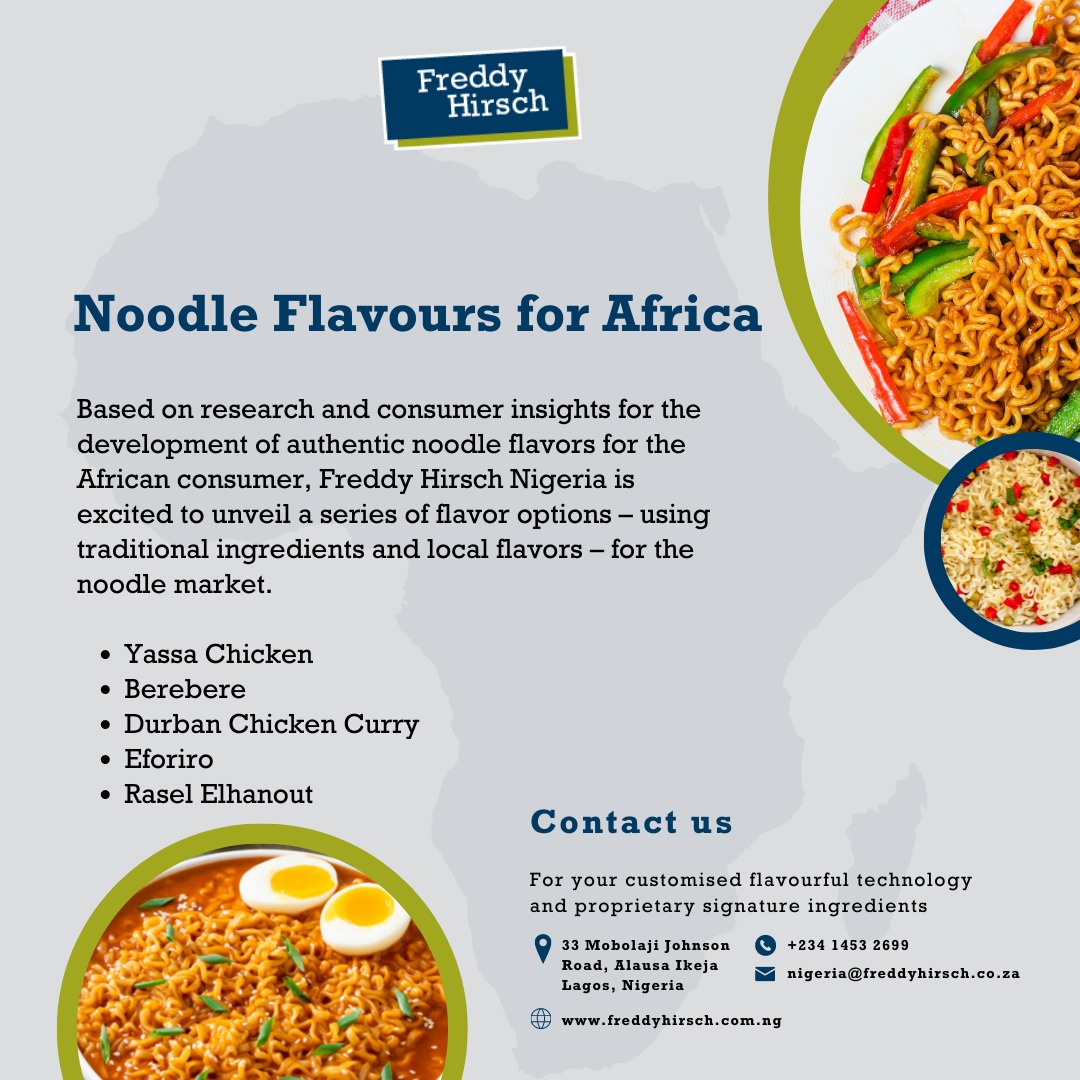Changing consumer lifestyles, increased urbanization and a growing working class are gradually introducing less traditional contenders to African staples. A few years ago, Nigeria’s most popular dishes were pounded yam, jollof rice, Amala, Tuwo, Ofe Owerri and Efo Riro. Today, ramen-type noodles are deeply embedded in homes as an instant meal with annual servings in Africa exceeding 1.78 billion as at 2017.
The global instant noodle market is projected to grow from $54.60 billion in 2022 to $81.84 billion by 2029, at a CAGR of 5.95% within the forecast period, 2022-2029. In terms of the continental split, 85% share of the global market is from the Asia Pacific region, 5% from Latin America, 6%, from Europe, and 4% from Africa. Originally from Japan, instant noodles are produced in over 90 countries worldwide and have become one of the most internationally recognized food products that are consumed across developing and developed countries.
Since the introduction of noodles in Nigeria in 1988, by Indo foods, under the brand name Indomie, noodles have gained popularity, thanks to their convenience, taste, nutrition, and affordable prices. Today, Nigeria has become the 12th largest instant noodle market in the world. Since Indomie’s entry into the market, at least 10 other brands currently compete with Indomie to capture the Nigerian noodle market with flavors becoming easy differentiators. The chicken flavor has become the dominant flavor in the noodle category.
With little effort and at an affordable price, an instant noodle meal is ready within 5 minutes, saving the busy worker, the comfortable middle class, the university student, the mother and the children, time and a grumbling stomach. Noodles is the go-to meal, thanks to their ease of preparation, especially when you are short on time. It can be garnished with an ensemble of seasonings, proteins, and vegetables such as tuna or Titus, tomato, carrot, hotdog, and of course chili pepper.
Despite the changing preferences, consumers are still looking for flavours that have authentic African tastes. For noodles manufacturers to gain more market share and increase consumption of noodles, they must innovate around the taste preference of Africans. The current chicken flavour in the noodle takes inspiration from the Asia Pacific, where meaty notes from chicken, beef, and pork, among others are typically preferred. Unfortunately, Africa has its own preferred cuisine, which provides an opportunity for noodle manufacturers to take advantage of by integrating authentic African.
Based on research and consumer insights for the development of authentic noodle flavours for the African consumer, Freddy Hirsch Nigeria has created a series of flavour options – using traditional ingredients and local flavors – for the noodle market. Considering regional target flavour profiles, consumer preferences, cooking traditions and consumption habits, the development involved flavourists, R&D, regulatory, analytical, marketing staff, process engineers, and global procurement professionals. Introducing the Freddy Hirsch noodle flavors, available in:
Yassa Chicken (Senegal): This is the foundation of this delicious West African seasoning, which is also complemented with spices like lemon, black pepper, roasted garlic notes, hot chilli, and fried chicken flavours to give a unique mouth-watering taste.
Berebere (East Africa): This is a fiery spice blend bursting with unique flavours. The authentic Ethiopian spice blend is full of flavour and heat. It is made up of chilli pepper, caramelized garlic, fenugreek, toasted onion, cloves, cinnamon and roasted chicken notes to give the long-lasting mouthfeel of East African goodness. This seasoning can be used in stew, soups, and rubs for meat and chicken.
Durban Chicken Curry (South Africa): Spice up your food with our hot and spicy curry seasoning. This seasoning is a blend of garamasala, cardamom, cinnamon which gives a hint of sweetness and adds a rustic touch to this flavor.
Eforiro- (Nigeria): This is a native seasoning that is indigenous to the Yoruba people of western Nigeria. It is a unique blend of spinach, dry fish, locust beans (Iru), toasted onions, scotch bonnet flavor, chilli pepper, and cow stripe flavour.
Rasel Elhanout (North Africa): This is a blend of spices that varies from region to region in Northern countries of Africa, Morocco, Tunisia,and Algeria which comprises of sweet peppercorn flavour, fenugreek, ginger, cardamom, rosebuds clove, nutmeg, coriander, mace, and paprika flavor which can be used to season various savory dishes including pasta, rice, stews etc.
Welcome to our thirteenth ‘A Taste of Africa’ newsletter and our feature on the versatile, ubiquitous and adventurous noodle!
Kojo Brifo
Managing Director, Freddy Hirsch Nigeria
The Flavour of the Month
Our flavour for the month is the Noodle flavour. Noodles are an essential, ubiquitous and dynamic meal in most African homes and can be recreated in several different dimensions. Due to their convenience and affordability, instant noodles are popular in Nigeria and are eaten as full meals as well as snacks.
Whatever your flavour is: beef, chicken, onion chicken, onion, pepper soup; you can now enjoy the local goodness of authentic noodle flavour by Africans, for African!
Find out more about our noodle flavours here

You can also watch our video on our African Noodle Flavours here
Freddy Hirsch, Symrise Partnership Continues to Drive innovation in Local West African Flavours
The Freddy Hirsch and Symrise partnership continues to drive innovation in local West African flavours.
In this mention by Food Business Africa, we articulate that how our partnership allows us tap into the pulse and valuable insights from African customers, to meet the unique taste preferences of the regional market, and develop competitive solutions in culinary, bakery, confectionery, and dairy.
